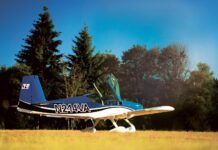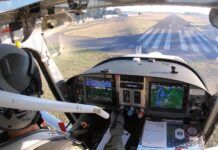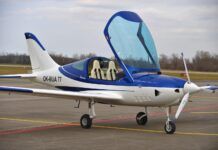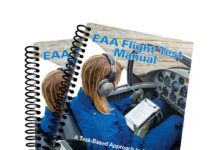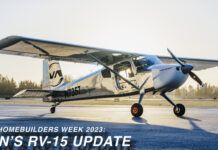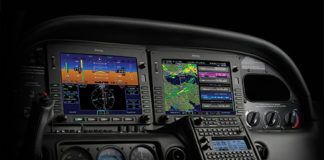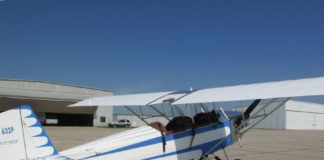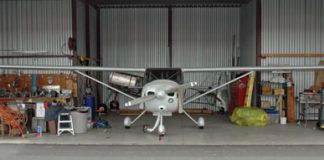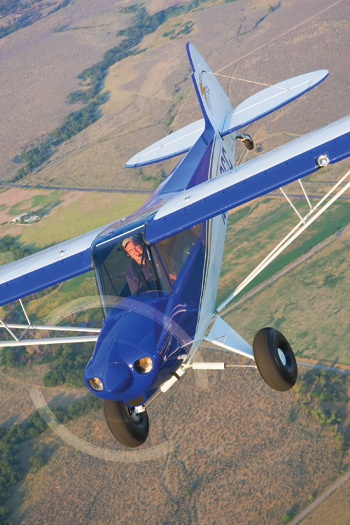
There was a time-not many decades ago-when the non-aviation public referred to any light plane as a Piper Cub. The success of Pipers J-3 Cub in the post-WW-II GI Bill training frenzy overshadowed other trainers, including even the Aeronca 7AC Champ despite its larger cockpit, better (front seat) pilot visibility and slightly faster speed on the same 65-horsepower engine. Many thousands of pilots liked both the Champ and the Cub, but it was the well maintained or restored J-3 Cub that appreciated to 10 or even 20 times its original price.
My memory of flying J-3 Cubs dates to 1970 and a grass-strip airport south of Norfolk, Virginia, where the FBO had several Cubs and rented them for $7 an hour wet. I was a back-seater in a Navy Phantom II squadron based nearby, and on several Saturday mornings one of the bachelor Phantom pilots and I rented J-3s and engaged in mock air combat. I usually won, because Al made the mistake of taking his girlfriend along; dogfighting without the stick and throttle in your hands is not for the occasional or weak-stomached passenger.
More Cub Nostalgia
Over the years, the popularity of the J-3 Cub exceeded the availability at reasonable prices, which led to the development of plans and kits that helped homebuilders produce replicas. One of the earliest was the Wag-Aero CUBy, which was too close to the original in form, function and name for Piper Aircraft to ignore. Piper convinced Wag-Aero to make a change, which is why todays Wag-Aero kit that builds into what sure looks like a J-3 Cub is known as the Sport Trainer (our cover subject in January).
The ultralight movement spawned numerous Cubalikes, and the Light Sport Aircraft (LSA) category has further extended the likeness of the Piper Cub. Two U.S. firms-American Legend Aircraft in Sulphur Springs, Texas, and CubCrafters of Yakima, Washington-manufacture ready-to-fly versions of the Cub that qualify as Special (factory-built) Light Sport Aircraft.
Meet the Sport S2
Last summer I flew with CubCrafters owner Jim Richmond in his company’s SLSA offering, the Sport Cub S2. Started in 1980, CubCrafters has developed a reputation for its PA-18 Piper Super Cub restorations and upgrades. The Sport Cub S2 is one of the few SLSAs made in the U.S.; the great majority are European or other foreign imports.
The company’s Sport Cub S2, powered by a Continental O-200, is a composite of features found in the Piper J-3 and the smooth-cowled Piper Super Cub. Standard features include round instruments, a Garmin SL40 com transceiver and an ELT. Also standard is airbag protection for the pilot and passenger. A long list of options includes flat-panel displays, custom paint, big wheels and floats.
Designed for the LSA maximum gross weight of 1320 pounds on wheels or 1430 on floats, the Cub S2 features a useful load of 472 pounds and a fuel capacity of 25 gallons (24 usable). With full fuel in the wheeled version, about 326 pounds are available for people and baggage. Cargo capacity is 120 pounds including 100 pounds behind the rear seat.
Flying It
Wittman Field at Oshkosh, Wisconsin, during the annual EAA AirVenture convention is not the ideal locale for a leisurely checkout in a new airplane. Therefore, companies with aircraft to promote often arrange to base at least one of their planes at a nearby small airport. For my flight with Richmond, I drove to Hickory Oaks Airport, a pretty little grass strip and recreational-vehicle campground a few miles north of Oshkosh. Surrounded by cornfields, the taxiway and narrow runway were reminiscent of my flights decades earlier in actual Piper Cubs.
Richmond and I walked around the Sport Cub, which belonged to a customer and was equipped with optional tundra tires. Invited to occupy the front seat, I donned the lap and shoulder harness, which contains the standard air-bag system. The extra bulk compared with a standard harness was not distracting, and I soon forgot I was wearing the safety device. The cockpit is large and comfortable. Quickly apparent was the good front-seat visibility. Even with my short sitting height and without a seat pad, I could almost see the horizon over the nose, which is unusual for me in a taildragger with the tailwheel on the ground.
With prestart checks complete, I held back stick, pressed the toebrake pedals, cleared the area, and started the Continental. At this point, three improvements to the Piper J-3 configuration were already apparent: the previously mentioned better cockpit visibility, toebrakes instead of the much-derided heelbrakes, and no need for a volunteer prop-swinger up front.
With oil pressure in the green and plenty of fuel in the selected tank, we rolled onto the taxiway defined by late-July cornstalks on both sides. Taxiing was easy and kept us close to centered, but at this point I decided that I had nothing to prove by making the takeoff and mentioned to Richmond that Id like him to do that task. Turning north onto the runway after checking both ways for air traffic, I noted that during our back-taxi, we were lined up on one of the observation towers at the large local prison, which is close to the end of the runway. We planned a south takeoff away from the prison, but with a north wind you would need a low-altitude crosswind turn at this strip in most airplanes to avoid over-flying the prison.
Raising the tail early in the takeoff run improved runway visibility for both of us, and a climbout at 60 knots resulted in a climb rate close to the book spec: about 800 fpm. (The ASI was marked in mph, but Ive converted to knots because LSA airspeeds are listed that way.)
Shortly after takeoff, I took the controls and quickly found stick and pedal forces in the climb were pleasantly responsive but not overly sensitive. Control balance is nicely harmonized: At a given airspeed, the required aileron, elevator and rudder pressures are similar. After making gentle clearing turns during the climb, I tried a partial-power departure stall. A mild break came at a high deck angle and 36 knots indicated, and neither wing dropped.
Several power-at-idle approach stalls followed. Each time, the break, such as it was, occurred at about 35 knots. Recovery from the first stall was achieved without adding power. I simply released back pressure, and the S2 immediately returned to feeling solid with no tendency to enter a secondary stall. Using engine power for recovery on the second stall, we appeared to lose only about 20 feet after the break.
Positive pitch stability is required in an LSA, and the hands-off pitch check showed a quickly damped return to trimmed attitude and airspeed in a single cycle. With or without flaps-trimmed or with back pressure-slow flight at 45 knots felt solid and completely controlled. The flap handle is accessible to the front pilot only, and there is considerable pitch change initially when lowering flaps. But if you allow the S2 to slow before re-trimming, not much change is needed. A full-power level run at about 2000 feet yielded 95 knots indicated.
After running out of items on my flight card, I headed us back toward Hickory Oaks in what seemed like very little flight time. (Maybe I should find more items for my flight card.) Still, I like everything about the way the Sport S2 flies. On the right base approach, I flew a few feet outside the south fence of the prison, turned final and let Richmond put it down between the cornfields.
Buying One
Base price for the SLSA Sport S2 is listed at $119,500, and each one is built to order. The order form makes it clear that delivery will be some months away, which gives the buyer time to decide on options such as a paint change from the dj vu yellow with a black lightning stripe. Fly before buying is a recommended policy. Youll enjoy it.
For more information, call 509/248-9491, or visit Cubcrafters.
Dave Martin served as editor of this magazine for 17 years and began aviation journalism evaluating ultralights in the early 80s. A former CFI (airplanes, gliders, instruments), hes flown more than 160 aircraft types plus 60 ultralights (including a single-seat, no-basket hot air balloon). Now living at a residential airpark in Oregon, he flies his Spacewalker II homebuilt as a Sport Pilot.




